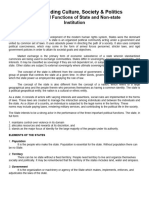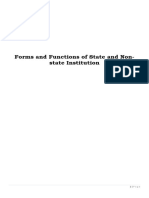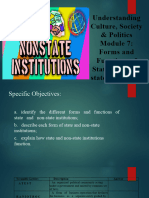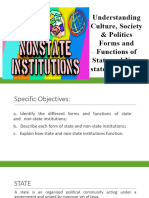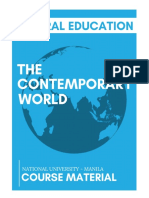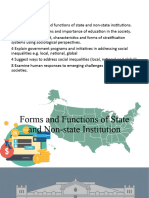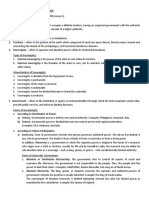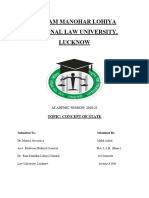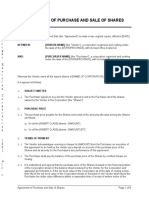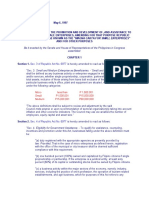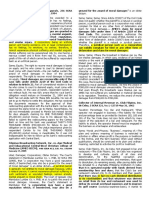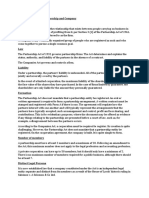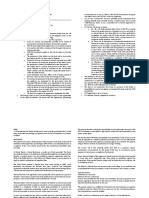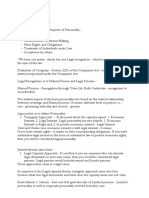0% found this document useful (0 votes)
57 views11 pagesLESSON 7 Forms and Functions of State and Non
State institutions are the traditional actors in international relations that wield sovereign power over a defined territory and population. In contrast, non-state institutions participate internationally without representing a nation. They include banks and corporations that influence policy through economic power, as well as advocacy groups, development agencies, and international organizations. While states differ in their forms of government, from authoritarian to democratic, they generally aim to provide security, allocate resources, and serve as a focus of national identity.
Uploaded by
jonamariemacaslingCopyright
© © All Rights Reserved
We take content rights seriously. If you suspect this is your content, claim it here.
Available Formats
Download as DOCX, PDF, TXT or read online on Scribd
0% found this document useful (0 votes)
57 views11 pagesLESSON 7 Forms and Functions of State and Non
State institutions are the traditional actors in international relations that wield sovereign power over a defined territory and population. In contrast, non-state institutions participate internationally without representing a nation. They include banks and corporations that influence policy through economic power, as well as advocacy groups, development agencies, and international organizations. While states differ in their forms of government, from authoritarian to democratic, they generally aim to provide security, allocate resources, and serve as a focus of national identity.
Uploaded by
jonamariemacaslingCopyright
© © All Rights Reserved
We take content rights seriously. If you suspect this is your content, claim it here.
Available Formats
Download as DOCX, PDF, TXT or read online on Scribd
/ 11





